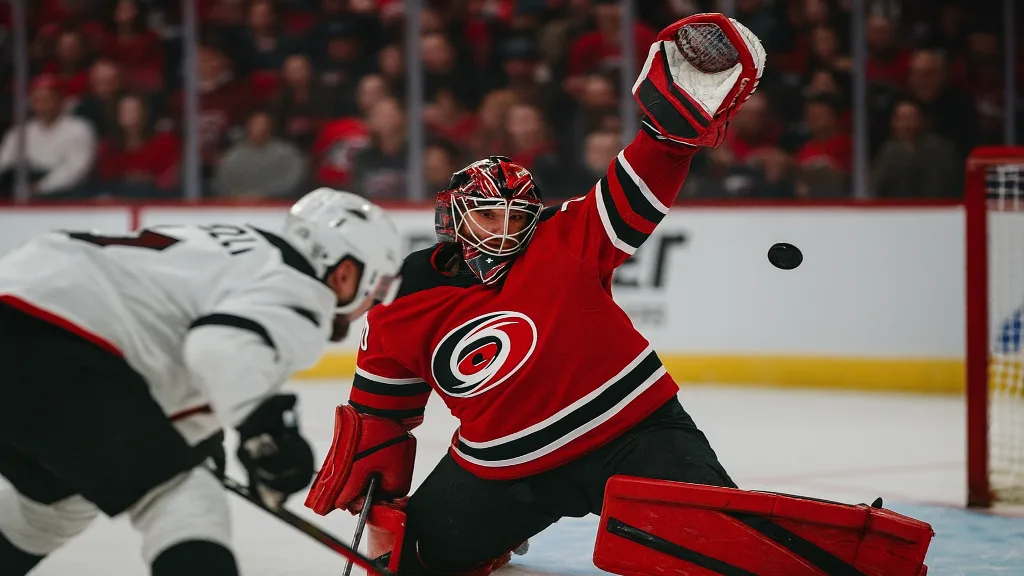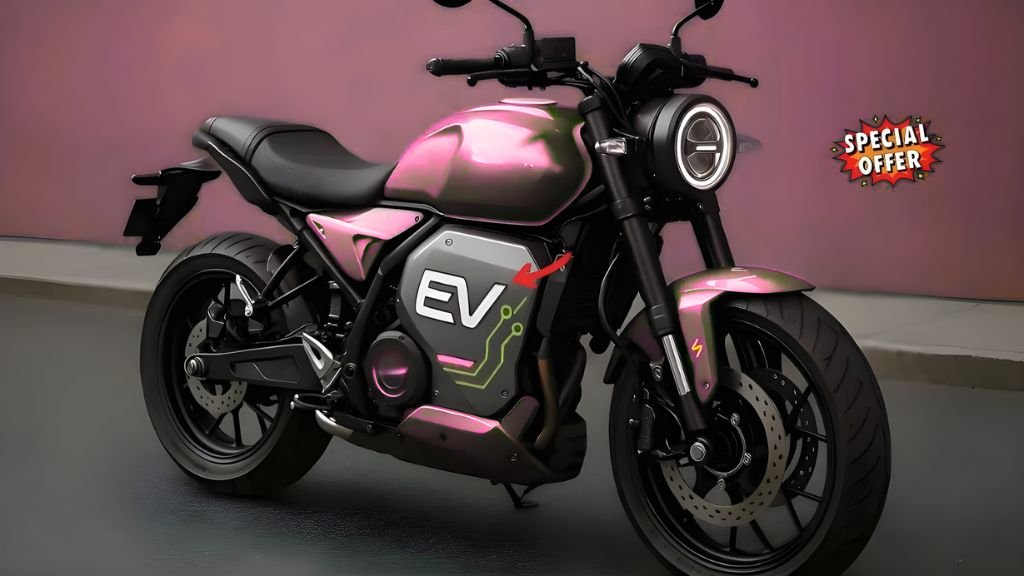The Carolina Hurricanes are making significant progress on two fronts that directly address the core of their 2025–26 blueprint. Goaltending has hovered as the one nagging question for years: when Frederik Andersen is healthy, he’s excellent, but stretches of absence have repeatedly forced the coaching staff to juggle roles. Enter Carter Hart, a 26-year-old with starter tools, who is back on the market and free to negotiate a new chapter.
Alongside him is Michael McLeod, a center whose straight-line speed, puck pressure, and faceoff chops mirror the type of depth the Hurricanes love to weaponize in the bottom six. Put together, this is not a splashy star hunt; it’s a targeted fix with a clear identity fit, and that’s why the Hurricanes making significant progress on both files has real weight.
| Snapshot | Details |
|---|---|
| Central Update | Hurricanes making significant progress with free agents Carter Hart (G) and Michael McLeod (C), both recently cleared to sign this fall |
| Eligibility Window | Eligible to sign NHL contracts from October 15; reinstatement for play from December 1 |
| Reported Shape Of Talks | Multi-year conversation for Hart reportedly centering around a two-year horizon; McLeod viewed as a natural bottom-six fit with speed and faceoff acumen |
| Current Canes Context | Seeking long-term stability in net beyond Frederik Andersen’s availability concerns; desire to add pace and depth down the middle |
| Recent Numbers | Hart last full season (2023–24): .906 SV%, 2.80 GAA; McLeod: speed, forecheck utility, faceoff specialist profile |
| Roster Impact If Signed | Hart could become 1A in a structured defensive system; McLeod strengthens PK, draws, and match-up flexibility |
| Timeline To Watch | Oct 15 (contract eligibility), Dec 1 (reinstatement), early-season integration plan if deals finalize |
Why Hart Makes Hockey Sense In Carolina’s System
Carolina’s shot-share dominance and slot-denial patterns are tailor-made for a structured goaltender who plays within his posts and trusts his reads. Hart’s last full campaign with Philadelphia saw a .906 save percentage and a 2.80 goals-against average, numbers that landed right around his career baseline. Those are not Vezina headlines, but they’re also not the full story: behind a Hurricanes blue line that keeps chances to the outside and compresses seams with elite discipline, a goalie like Hart can trade chaos for predictability. The upside is stability, the very thing this room has craved when injuries have forced Plan B and Plan C.
There’s also the contract layer. A shorter multi-year horizon—reporting suggests a two-year shape has at least been floated—would bridge the organization to its internal pipeline without boxing in flexibility for cap-era pivots. For a club already built around a puck-dominant core, giving the crease a reliable floor might be the cleanest path to win totals in the brutal Metro arms race.
What McLeod Would Add On Day One
Michael McLeod profiles like he was ordered off Carolina’s menu. He’s fast, he hounds pucks on exits, he tracks back hard, and he lives in the faceoff dot. That last piece matters in Raleigh, where the staff values territorial control off draws to keep cycle pressure rolling. Drop him into a fourth-line center role with penalty-killing minutes and you instantly deepen match-up options against speed lines. The Hurricanes making significant progress on McLeod is less about box-score fireworks and more about the habits that make their five-man pressure hum.
The Timeline That Shapes Everything
There’s a firm calendar here. Both players are eligible to sign NHL contracts beginning October 15. They can be reinstated for gameplay starting December 1. That two-step process means training-camp chemistry has to be simulated off-ice first, then ported onto the ice with compressed lead-time. The Hurricanes making significant progress now gives them a head start in planning: goalie reps, travel logistics, systems refreshers, and penalty-kill cadence can all be slotted into November so December doesn’t feel like a scramble.
Andersen, Health, And The 1A/1B Conversation
Frederik Andersen has put up terrific numbers when available, and that’s why, year after year, Carolina’s staff and room trust him. But the book on this era is that availability has never been a casual footnote. If the Hurricanes making significant progress with Hart reaches the finish line, the club would finally have a true 1A/1B dialogue instead of a binary 1 or emergency carousel. A steady cadence—split starts, ride the hot hand, or time-slice back-to-backs—would keep workloads rational while letting the team’s defensive structure do the heavy lifting.
Systems Fit: How Rod Brind’Amour Could Deploy A New Bottom Six
Think of McLeod as a hinge piece. On home ice, Brind’Amour can shelter offensive lines and throw McLeod for defensive-zone faceoffs against speed. On the road, he can neutralize an opponent’s third line and free up top-six rush opportunities for Sebastian Aho, Andrei Svechnikov, Seth Jarvis, and the play-drivers. The Hurricanes making significant progress with a faceoff ace isn’t a headline for casual fans, but it’s the kind of micro-edge that shows up over 82 nights—fewer clean exits for the other side, more offensive-zone starts for scorers, and a penalty kill that spends less time chasing.
What A Two-Year Hart Deal Signals
A two-year path would signal three things. First, confidence that the goaltender’s tools translate behind this defensive environment. Second, a desire to keep cap maneuverability intact if a market opportunity appears. Third, a belief that the room needs stability in net right now, not a lengthy development audition. The Hurricanes making significant progress on terms like these would be a classic Carolina move: pragmatic, targeted, and flexible.
December 1 Integration: The Practical Checklist
December call-ups are normal; December goalie integrations are not. If both contracts materialize, here’s the practical checklist the staff will work through. One, special-teams timing. Hart’s PK reads in the slot and seam closeouts will need quick reps with the regular unit. Two, neutral-zone triggers. Carolina’s 1-1-3 and variations ask goalies to be ready for dump-read decisions and set plays; that rhythm is teachable, but it’s different from market to market. Three, line chemistry for McLeod. He’ll need a winger who mirrors his straight-line forecheck and retrieves pucks off first contact. Nail those three and the December overlap becomes an advantage by January.
The Metro Reality Check
The Metropolitan Division punishes slow starts. The Rangers are mean in the middle, the Devils can run and gun, and the Islanders suffocate space on schedule. The Hurricanes making significant progress before Halloween is a competitive necessity, not a luxury. This club’s five-on-five brilliance keeps it near the top in expected goals; where series swing is in the odd-man-rush suppression and that one extra save in Game 4. A Hart-Andersen tandem increases the odds that the Canes bank points they’ve occasionally left on the table during health dips. A McLeod addition reduces bend-but-don’t-break minutes for Aho’s line in defensive starts. Over months, those are standings points.
The Human Angle And Fresh Starts
Both players arrive to this moment after being charged and subsequently acquitted in a high-profile case. The league’s reinstatement schedule frames what comes next on the ice, but in the room, the human angle always matters. Hurricanes culture has long hinged on work rate, accountability, and “stick to the plan” habits. The Hurricanes making significant progress suggests the franchise believes the hockey fit and the environment are aligned for a fresh start rooted in structure and responsibility. It’s not about image rehab; it’s about role clarity and team standards.
How The Cap Math Could Work
Carolina’s cap discipline is a brand. A shorter term for Hart at a manageable AAV allows the club to maintain flexibility at the deadline and to address any unforeseen blue-line needs. McLeod’s likely slot would fall into the bottom-six pay band, which the team has historically optimized by finding role purity rather than name value. The Hurricanes making significant progress on both would be consistent with a front office that bets on systems synergy and cap hygiene rather than headline hunting.
What Changes For Carolina’s Style Night-To-Night
If you’ve watched Carolina, you know the soundtrack: pucks deep, first contact, collapse and reload. With Hart, the backline might lean even harder into perimeter funneling knowing the first save rate will hold. With McLeod, you could see an uptick in “green light” forecheck patterns in games where the bench wants to tilt ice and test a tired opponent’s breakouts. The Hurricanes making significant progress is not about reinventing the wheel; it’s about tightening the spokes.
Risk Factors And Contingencies
No move is risk-free. Goalies are voodoo until they’re not, and translating form into a new market carries variance. The Hurricanes making significant progress toward a two-year deal mitigates long-tail risk but doesn’t erase transition noise. For McLeod, the question is finishing. If his line spends a ton of time in the O-zone and still struggles to convert, that puts pressure on special teams to bridge the gap. The contingency? Carolina always keeps scouting goalie depth and remains nimble with waivers and two-way deals. Down the middle, the club can also elevate a youngster if scoring sputters, using McLeod’s line as the defensive shock absorber.
The Dressing Room View
Veteran rooms appreciate moves that solve daily headaches. The Hurricanes making significant progress to secure a crease partner who shows up, punches the clock, and makes the first save lets defenders make assertive reads without fearing the second guess. A faceoff guy who takes the heavy PK draw or the defensive-zone start after icing? That’s the sort of role that earns quick respect. Culture is the sum of little reliables. These potential additions are little reliables writ large.
The Opponent Scout
What do opponents see? Against Hart, pre-scouts will talk about north-south traffic and taking away his eyes, because he’s technically solid when he sees it. Against McLeod lines, they’ll warn their D to move pucks early because Carolina’s forecheckers hunt in packs. The Hurricanes making significant progress forces rival coaches to burn practice reps on adjustments, and that’s an edge before the puck even drops.
December And Beyond: Measuring Success
If both signings land and the calendar flips to December 1, success will be measured in simple ways. Are the Hurricanes banking the routine two points on schedule nights? Is the penalty kill stable? Are defensive-zone draws less stressful? And in the macro, do shot-quality against numbers normalize to Carolina’s high standard? The Hurricanes making significant progress now is the first step; the proof of concept will be a steady drumbeat of businesslike wins.
Bottom Line
This is a classic Canes play: identify structural needs, find players whose habits fit, and move with timing that maximizes leverage. Goaltending security and a faster, sturdier bottom six are season-long enhancers. If the Hurricanes making significant progress culminates in signatures from Carter Hart and Michael McLeod, Carolina’s margin for error in the Metro gets a little wider, and their spring ceiling gets a little higher.
FAQs
What does “eligible to sign on October 15” actually mean for the Hurricanes?
It means the players can formalize NHL contracts starting October 15, allowing the team to integrate them into meetings, video, and practice structure while they await reinstatement. The Hurricanes making significant progress ahead of that date positions the club to move quickly.
When could they actually play games?
They would be eligible for reinstatement to play beginning December 1. Practically, that means any on-ice debut would come after a short runway of team practices and systems work so that the Hurricanes making significant progress on paper becomes performance on ice.
How would a Hart-Andersen tandem be managed?
Expect a 1A/1B cadence with workload sharing early, riding form while keeping both goalies fresh. The Hurricanes making significant progress in net is about avoiding over-reliance on one health-sensitive option and letting the defensive system amplify both.
Where does McLeod fit in the lineup?
He projects as a bottom-six center with penalty-killing assignments and heavy defensive-zone faceoffs. The Hurricanes making significant progress here targets territory control, forecheck pace, and match-up freedom for the top six.
Is this a win-now push or a bridge move?
It’s both. A likely shorter multi-year horizon for Hart bridges to future cap flexibility while solving a present-tense need. McLeod plugs a nightly role gap. The Hurricanes making significant progress is about stacking regular-season points and sharpening the playoff spine without mortgaging tomorrow.







